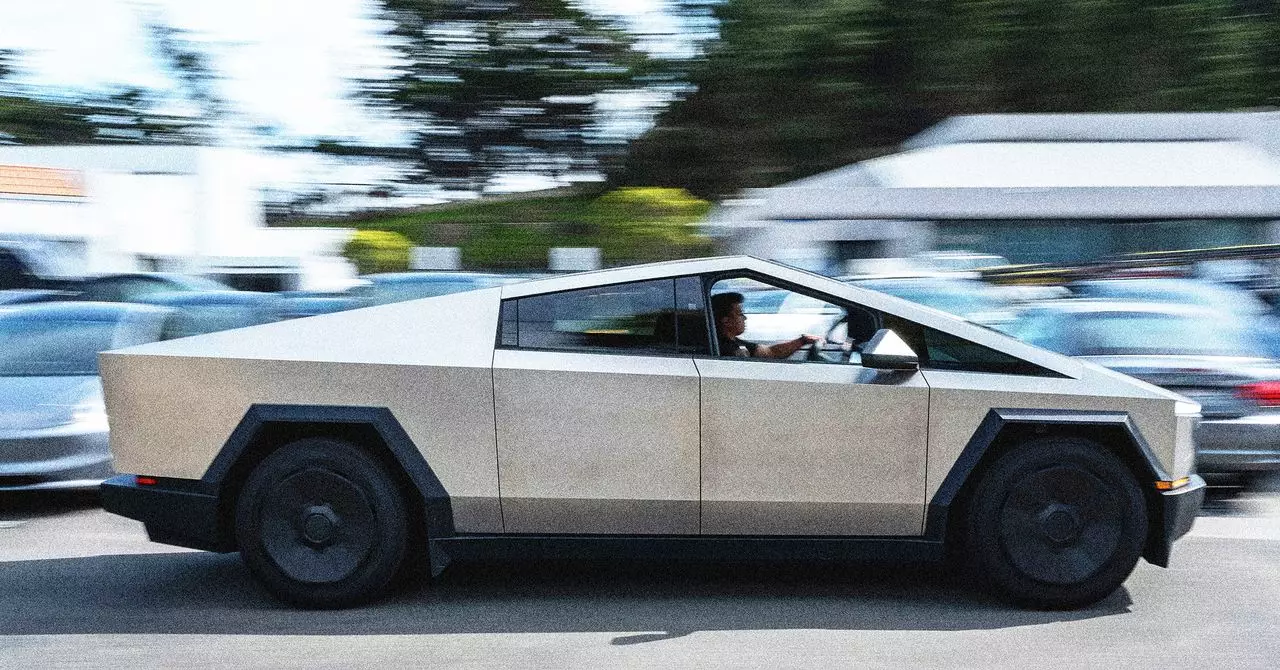Tesla’s recent announcement of a recall affecting nearly all Cybertrucks produced to date has sparked significant conversations across the automotive industry and consumer circles alike. Contrary to the swift fixes often associated with Tesla’s software-centered approach, this recall involves a physical repair due to a cosmetic trim panel issue—an unexpected move from a company renowned for its innovation. This incident marks the eighth recall for the all-electric truck since its launch over two years ago, which raises deep questions about the production processes and material choices that underpin Tesla’s ambitious endeavors in the electric vehicle market.
The recall, which affects over 46,000 Cybertrucks manufactured between November 2023 and late February 2025, requires affected vehicles to be brought into service centers for repairs, significantly shifting the narrative. The problem lies in the adhesive used to attach a stainless steel trim panel to the vehicle’s body, which has the potential to detach during operation, resulting in a serious road safety risk. Such concerns invoke not only the reliability of Tesla’s quality control processes but also the scrutiny surrounding the broader implications for electric vehicle safety standards.
Glued Together: A Deeper Look at Adhesives in Auto Manufacturing
Dale Harrow, an expert in automotive design, has emphasized that the use of adhesives in automotive construction is not a novel practice. In fact, many manufacturers integrate different types of glues to bond panels and parts with the aim of achieving lighter, more efficient builds. However, Harrow’s observations on the unusual combination of adhesives and the stainless steel utilized in the Cybertruck’s design indicate a possible oversight within Tesla’s engineering team.
Stainless steel, while being an innovative choice for vehicle construction due to its durability, presents unique challenges when mixed with adhesives. It seems that the specific environmental conditions and production nuances unique to Tesla’s assembly process may have contributed to the issue at hand. Potential factors such as temperature management during the curing process or UV exposure levels could directly impact the adhesive’s efficacy. The nuances of these factors highlight an overlooked complexity that may affect not just Tesla but could also serve as a cautionary tale for the broader industry as it ventures further into unconventional material choices.
Consumer Perception and Brand Integrity
Recalls create a tumultuous landscape for any automaker, especially one with the immense public scrutiny faced by Tesla. For many consumers, the allure of Tesla vehicles centers around the promise of cutting-edge technology and quality engineering. The reality of multiple recalls can erode trust, and while Tesla has garnered a strong following among electric vehicle advocates, incidents like this can quickly alter consumer sentiment.
To further dissect the implications, this recall reveals an essential tension between innovation and reliability. As Tesla continues to push technological boundaries, questions about quality assurance become increasingly crucial. Will Tesla’s commitment to sustainability and innovation compromise traditional measures of reliability? The Cybertruck, marketed as a trailblazing pick-up capable of redefining utility vehicles, now finds itself challenged by manufacturing concerns that contrast sharply with its futuristic promise.
The Road Ahead: Learning from Mistakes
Despite the current challenges, there is room for optimism regarding Tesla’s response to these issues. The company’s handling of this recall—committing to a thorough investigation and an equally thorough solution—suggests a proactive approach toward quality management. By opting for a different adhesive that mitigates environmental embrittlement risks, they illustrate a willingness to invest in long-term reliability over immediate convenience. Such steps could ultimately reinforce consumer trust by demonstrating an adherence to safety and quality, pivotal components in the EV market.
As Tesla hones its manufacturing processes and evolves with the lessons learned from these recalls, it remains essential for the automaker to maintain transparency with consumers. The ability to adapt will determine whether they can conquer these hurdles or whether they will be seen as an innovator that occasionally stumbles under its own ambitious goals. In the high-stakes arena of electric vehicles, the narrative of the Cybertruck recall is not just about one vehicle; it’s a testament to the complexities of modern automotive engineering and the delicate balance between ambition and execution.

